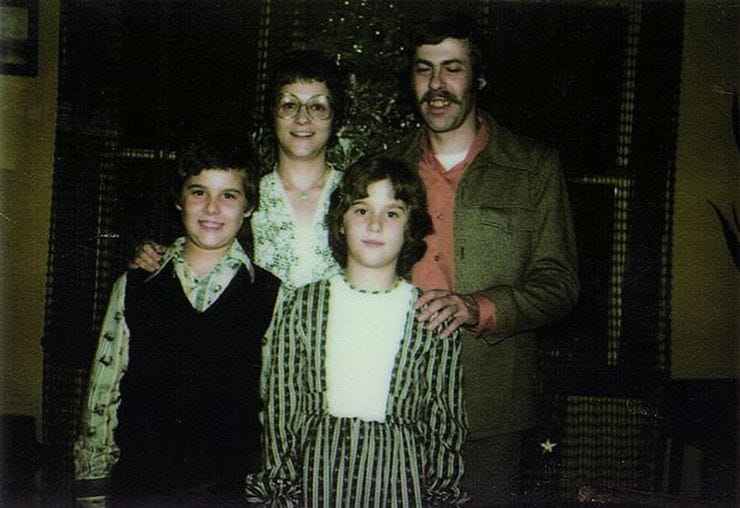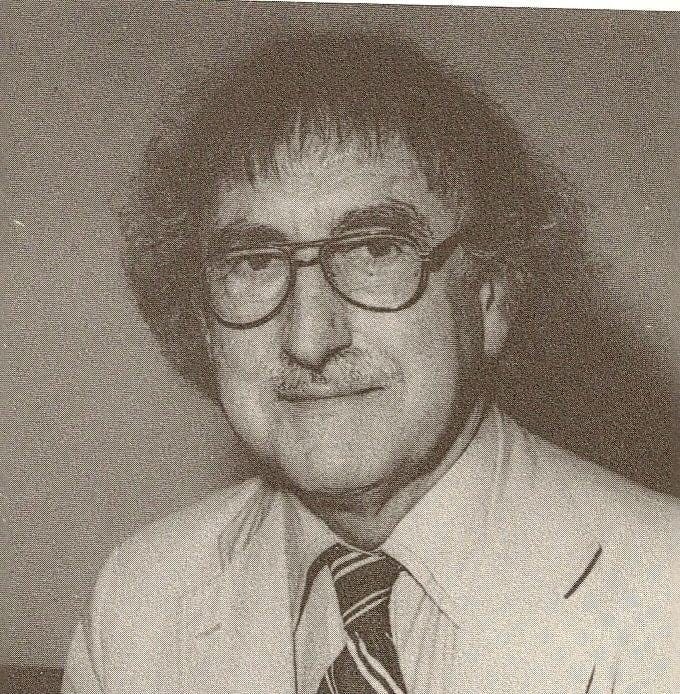[We have arrived with gender from the mists of history into the midst of the 20th century, to see herein how it was abused in the hands of psychologists long before the feminists claimed it. Part 1 and Part 2 are hyperlinked]
“Well! I’ve often seen a cat without a grin,” thought Alice; “but a grin without a cat! It’s the most curious thing I ever saw in all my life!”[1]
Lewis Carroll’s Alice
Bewhapement Begins
New Zealand born paedophile and paederasty advocate John Money promoted the use of the term "paraphilia" as a replacement for "perversion" so that deviance might become love, φίλος nevertheless not being the appropriate root to formulate terms for his depravities. He encouraged and justified venereal activity between adults and toddlers, even infants, introducing the term nepiophilia. He was a convener of and participant in orgies, and a fervent multi-media spokesman for libertinism, who lamented parental prevention of copulatory play by and exposure upon children.
Can of Worms
As a psychologist arrived at Harvard, Money began research in the late 1940’s into the clinical and social treatment of persons with hermaphroditic anatomy and related pathologies. In the 1950’s, with Joan and John Hampson, and paediatric endocrinologist Lawson Wilkins, Money denied sex as being a quality informing the totality of a person, and reduced it into “signs” or “variables of sex” which manifest biological, psychological and social features associated with sexuality[2].
Money concluded that a person has chromosomal[3] and gonadal “sex”, and allegedly more importantly hormonal, internal and external genital “sex”, on top of an assigned social sex[4], all of which may be “appraised with the seventh variable” he variously described as gender per se, and elsewhere as “gender role and orientation” or “outlook”, “as male and female”[5]. Money chose the word gender on the grounds that it lacked an erotic or genital sense, since he wished to differentiate this “psychologic sex” from the traditional five which were physiological, and the sixth which was social.
The mental contrivance whereby a sex chromosome, a gonad, or a secondary sexual characteristic that acceptably already were physiological signifiers of sex, was subverted to define piecemeal a person’s allegedly componential sex, suggested that sex was no longer holistically understood - and was not intrinsic to a person. The distinction was lost between signs that signify, by the reification of the signifier as part of a compoundable signet.
Semantic Soup
Money defined “gender role” as being what “a person says or does to disclose himself or herself as having the status of” man or woman, inclusive of erotic inclination. His wide-ranging gender role definition included mannerisms, interests, speech and dreams, and apparently self-contradictorily contains psychological, social and erotic aspects. Suitable terms might be psychosexuality for what one feels or thinks, and sexual expression or sociosexual role for what one does, and libidinous preference for the carnal proclivity.
The social aspects were to be construed as responses to environmental stimuli or learning, rather than as natural, teleological or vocational; and eroticism was claimed by Money to be undifferentiated at birth and a part of the developing gender, to be formed via the abuse of infantile “somatic erotic haptic sensitivity” - thereby making the entire concept of gender role psychic. And so, sexuality was to be learnt and expressed socio-culturally and was no longer governed even minutely by biology – a credence he had held since before he arrived at Johns Hopkins.
Money leapt arrogantly from erroneous insights extracted from studies of the rare disorders of sex and sexual development[6], to generalising about the fundamental nature of human beings. He elevated psychology from mere biology – and while de-emphasizing or disregarding evidence to the contrary, proclaimed that “it is no longer possible to attribute psychologic maleness or femaleness to” genetic, anatomical and physiological “origins.” He asserted a “genderless” psychological sexuality at birth and “no innate basis” for “behaviour and orientation as male and female”.
His pseudo-science merely required life experiences “encountered and transacted” for “gender role and orientation” to be learnt, built and established. That is, Money contended that a baby girl can grow up to be a man – or at least, a psychologically healthily masculine person, albeit with chemical and surgical intervention to counter the contrary somatic realities and make biological morphology and physiology suit the psychological delusion – of the psychiatrist[7] or of the patient, as the case may be.
Swinging Sixties
Whereas the Harriet Lane position in the fifties was that masculinity and femininity could be lived - and happily at that, but it had to be learnt early, was undifferentiated at birth and had no constitutional or instinctive source or driver, Robert Stoller at UCLA posited that a “sex-linked biological tendency” existed in addition to the socio-environmental. Such a hypothesis would hardly have been controversial before Money’s concept of gender.
Starting in the 1960s, and while crediting its introduction to sodomy rights campaigner Evelyn Hooker whose logic was that sanity justifies sin, Money began using the term gender identity which he later clarified to mean “the private experience of the gender role”, where “gender role is the public expression of gender identity”. Identity then would be felt in the mind, and role play would be observed by another - and Money would employ the acronym G I/R indicating their intermingling.
Stoller who earlier employed the term sexual identity - and Money also had spoken of psychosexual identity, changed a paper title containing “sexual identity” between the conference in 1963 and its publication in 1964. He however defined gender identity merely as “the sense of knowing to which sex one belongs” which he asserted that even infants possess, and it included “being aware of” whether one is a man or woman. Stoller quickly changed his term to “core gender identity.”[8]
Stoller also distinguished between role and identity, as initially applied to hermaphroditic patients who were the non-conformers to Money’s conclusions that social rearing trumped genitals, gonads and the Y chromosome, but subsequently applied it to those not diagnosed with disorders of sex and sexual development - but having a contrary sexual sense of self. Those with contrasexual identities were referred to rather as transsexuals – a term coined in German by der urnische mensch Dr Magnus Hirschfeld in 1923.
Stoller went on to justify the normalisation of perversion.Money’s work has been at best proven to be poor application of the scientific method enhanced perchance by the relative primitivity of the sciences and communications in the mid-twentieth century, and at worst fraudulent, even Machiavellian.The “sex reassignment clinic” he co-founded for surgical mutilation of the mentally ill was closed down[9], but his theories and their derivatives continue to be employed to abuse vulnerable children and enrich physicians, surgeons, pharmacists, hospitals, regulators and the entire medical supply web – and to drive law reform and transform culture in lands far away from the US. The grief of the Riemers is a speck of dust upon the tip of an iceberg that keeps growing beneath dark gelid waters to this day.
[In Part 4, we will follow gender into the 1970s and 80’s and see how the teeth in the grin was configured to suit feminist theories, and orthognathically aided, was popularised and brought to dominance.]
[1] Pig and Pepper, 6
[2] https://dreshandias.substack.com/p/genealogy-of-gender-and-the-degeneration; as understood in the “lexical interlude”
[3] https://dreshandias.substack.com/p/intersexual-humanity, DOI: 10.13140/RG.2.2.12522.90564
[4] Indeed, it is only for patients with severely disordered sex and sexual development that a physician may be required to recommend an assignation of sex for social rearing.
[5] Money, J., 1955, Bulletin of the Johns Hopkins Hospital, 96, 253 and subsequent articles with the Hampsons
[6] fueled by a preconception arisen from a deep-seated desire to sunder a disturbed mind from a sexed body, cf. Colapinto, J., 2000, As Nature Made Him, Harper Perennial
[7] Diamond, M., 1997, Arch Pediatr Adolesc Med., 151(3):298 vs Money, J., 1975, Archives of Sexual Behavior, 4, 1
[8] Stoller, R. J., 1964, International Journal of Psychoanalysis, 45, 2002
[9] https://www.str.org/w/why-the-first-hospital-to-do-sex-reassignment-surgeries-no-longer-does-them, and then https://www.americanbar.org/groups/litigation/resources/newsletters/lgbt-law-litigator/johns-hopkins-hospital-opens-center-transgender-health/






Nicely written and informative article. Looking forward to reading Part 4.